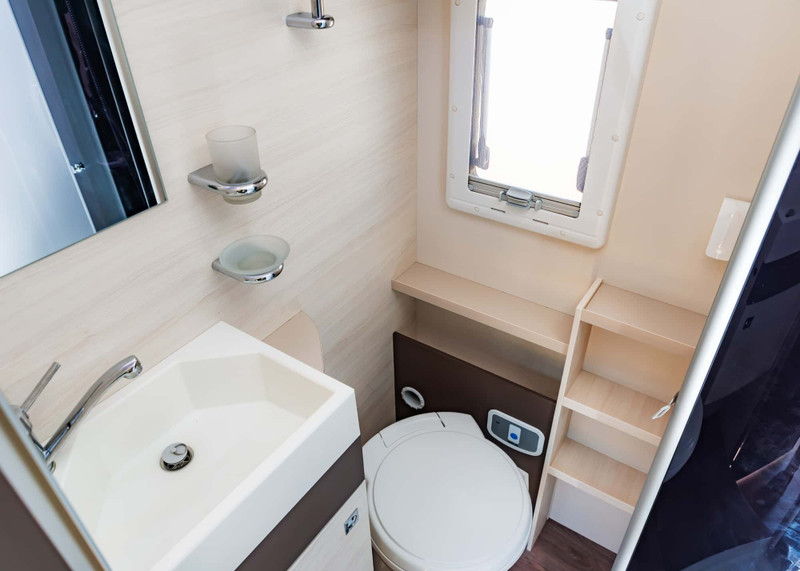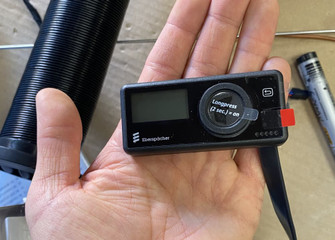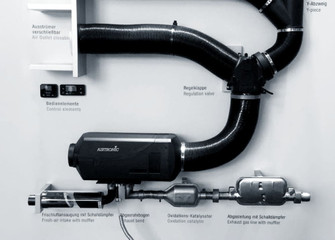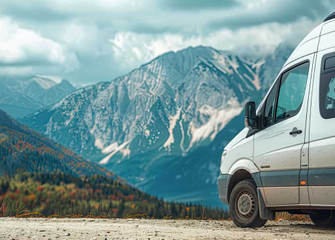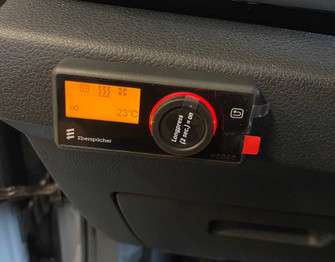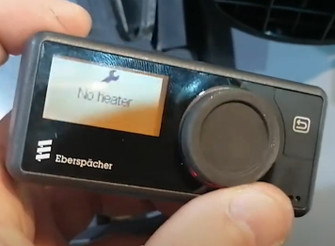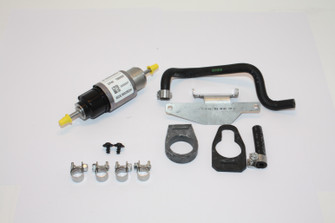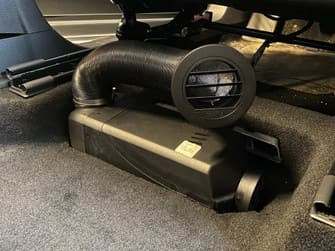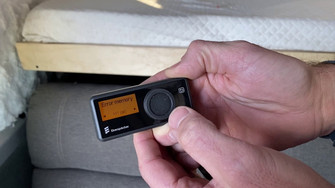Essential Checklist for Maintaining a Fully Functional RV Bathroom
Posted by Heatso on 21st Sep 2023
Traveling in your RV allows you to discover new places, and gives you a sense of freedom. However, there are some less glamorous aspects to RV travel, particularly when it comes to maintaining the bathroom of your RV.
ESSENTIAL CHECKLIST FOR MAINTAINING A FULLY FUNCTIONAL RV BATHROOM
Traveling in your RV allows you to discover new places, and gives you a sense of freedom. However, there are some less glamorous aspects to RV travel, particularly when it comes to maintaining the bathroom of your RV.
We're sharing the essential checklist for maintaining a bathroom that not only serves its purpose and it’s functional but also becomes your own personal oasis, even when you're on the go.
ON THIS PAGE
TYPES OF RV BATHROOMS
Dry Bathrooms
Think of the typical bathroom layout, which has a separate area for the shower and the toilet.
Toilets and showers are separated in a dry bathroom by a shower screen or wall.
During a shower, everything else in the bathroom stays dry, including the toilet and any other items. A dry bathroom may also feel wider than a wet one.
Even though this provides a sense of comfort, it is crucial to optimize RV space so everything fits well.
Wet Bathrooms
Imagine an all-in-one solution where the shower, toilet, and bathroom sink fit into one compact unit. In a wet bath setup, every inch is used smartly to create a functional space.
It's efficient, functional, and perfect for those who want to make the most of every corner. While it’s designed to be space-saving, you’ll likely have to wipe down the toilet, walls and floor area after taking a shower.
DIFFERENT LAYOUTS OF YOUR RV BATHROOM
RV Combined Bathroom
Shower toilet combo for camper enable RV owners to get an RV shower into campers that do not have enough space for separate shower/toilet facilities. RV’s bathroom is usually located along one side, but it can also extend across the back wall.
In a nutshell, an RV shower toilet combo is exactly what it sounds like - an RV shower space that also has a small toilet and sink.
The purpose of RV shower toilet combos is more about getting the job done and getting out as quickly as possible. As a result, you'll save water, which is essential when camping in an RV.
RV Separate Bathroom
Separate bathroom for RV could be a good decision if you are on the road with your friends. It is possible to use both a toilet and a shower simultaneously when they are separated. In most RVs, one bathroom is located on the driver's side and the other on the passenger's side.
In spite of the small size of the rooms, the convenience they provide is enormous. There may be no queues for quick showers on the road ever again.
RV BATHROOM MAINTENANCE
Regular Inspection of Pipes and Fittings
Proper Disposal of Waste and Toilet Paper. Using best practices when getting rid of waste is crucial. Do not flush anything but human waste and RV-safe toilet paper down the toilet. Avoid using regular household items, as they can lead to clogs and issues in your RV plumbing system.
Using RV-Safe Toilet Chemicals. RV-safe toilet chemicals are necessary to keep your plumbing system running smoothly. They break down waste and reduce odors while being gentle on your plumbing. Your pipes and fittings will last longer if you use these chemicals regularly.
Ensuring Adequate Ventilation
Importance of Proper Ventilation in RV Bathrooms. A well-ventilated bathroom for RV isn't just a matter of comfort, it's a matter of health. Mold and mildew can grow in your bathroom, which not only looks bad, but can also be dangerous. Ventilation keeps the environment dry and fresh by removing excess humidity.
Cleaning and Maintaining Vent Fans. It is highly important to have vent fans for good ventilation. Maintaining and cleaning them regularly ensures they work well. Make sure the airflow is not blocked by debris or blockages. It might be time to replace the fan motor or the whole unit if you notice decreased ventilation.
Managing Water Supply
Monitoring Fresh Water Tank Levels. Fresh water tank levels should be monitored regularly. Check your gauge regularly to see how much water you have left. By doing this, you'll avoid unexpected water shortages and have plenty of time to refill.
Treating Water to Prevent Clogs and Odors. Water treatment is a crucial step in keeping your RV's plumbing system in good shape. Using water treatment products prevents clogs and controls odors. The treatments break down waste and paper, so your plumbing stays clean.
Caring for Shower and Bathtub
Cleaning Surfaces and Drains Regularly. You need to clean regularly to prevent dirt accumulation. After each use, rinse the surfaces to remove soap buildup and prevent water spots. Frequently scrub the walls, floor, and appliances with mild RV-friendly cleaners. Don't forget to clean the drains to prevent clogs.
Using Mildew-Resistant Curtains and Mats. You can prevent mildew and mold by using mildew-resistant shower curtains and mats. These specially designed materials are moisture-resistant and easy to clean, helping you keep your shower or bathtub area fresh and hygienic.
Toilet Maintenance
Keeping the Toilet Bowl Clean and Sanitized. It's crucial to clean and sanitize your toilet bowl regularly to keep your bathroom fresh. Use RV-friendly toilet cleaners and a toilet brush to scrub the bowl and remove any dirt or stains. This practice ensures hygiene and prevents odors too.
Addressing Clogs and Blockages. It's frustrating to deal with a clogged toilet in your RV bathroom, but taking action can prevent further problems. Use a plunger designed for RV toilets to unclog the toilet. Consider RV-friendly toilet paper that breaks down easily to reduce the risk of clogs.
Sinks and Faucets
Checking for Leaks in Sink and Faucet Connections. Keeping sink and faucet connections inspected for leaks prevents water damage and waste. Regularly check if there's any dripping or moisture and make sure connections are tight to prevent leaks.
Using RV-Safe Cleaners to Prevent Corrosion. Sinks and faucets should be maintained for more than just their appearance; they should be rust-free. Use RV-safe cleaning products to remove grime without damaging surfaces. Cleaners like these keep your fixtures shiny and last a long time.
Proper Waste Disposal
Understanding RV-Specific Dumping Procedures. It's essential to know how to dump waste from your RV's holding tanks. Get to know your RV's plumbing system, including where the gray and black water tanks are. Make sure you follow the dumping station's guidelines and local regulations for waste disposal when you go there.
Using Tank Treatments for Odor Control. Accumulation of waste may cause an unpleasant smell, but you can manage it. RV tank treatments control odors, break down waste, prevent clogs, and improve performance. It's a rather small investment that pays off with a fresh and clean bathroom.
Maintaining the Black Water Tank
Flushing and Cleaning the Tank Regularly. The best way to prevent black water tank odors, clogs, and other issues is to maintain it regularly. Cleaning the tank's interior with clean water regularly helps remove waste. Some RVers recommend adding ice cubes to the tank before driving; the movement helps remove residue from the walls.
Preventing Buildup and Sensor Issues. Preventive measures can minimize waste buildup and sensor failures. Keep your RV tank clog-free by using RV-friendly toilet paper. In addition, adding black water tank treatments helps break down waste, control odors, and prevent buildup that can mess with sensors.
Grey Water System Care
Importance of Properly Functioning Grey Water Tanks. RV bathrooms generate grey water from a wide range of sources. These tanks need to work properly to prevent odors and stay eco-friendly. Grey water should be properly disposed of at campsites and dumping stations to protect the environment.
Cleaning and Treating Grey Water Systems. Keeping your grey water system clean and treated prevents odors, clogs, and buildup. Clean water helps remove residue from tanks. Using environmentally safe tank treatments for grey water systems breaks down waste, controls odors, and ensures the system works right.
Emergency RV Plumbing Solutions
Dealing with Leaks and Pipe Breakages. Leaks and pipe breaks can be stressful, but a calm attitude can minimize damage. Stop the water supply immediately to prevent further leaks and evaluate the situation. Pipe clamps and sealing tape can buy you time until a professional can fix it permanently. In such cases, it is always a good idea to carry a basic plumbing repair kit.
Essential Tools and Repair Kits to Carry. You can save the day when RV plumbing issues strike with a well-stocked toolbox. You should also include RV-specific repair kits containing pipe connectors, seals, and other essentials. You can use these kits to handle a variety of plumbing emergencies in RVs.
Seasonal Maintenance
Preparing the RV Bathroom for Winter Storage: Winterize your RV and protect your RV bathroom from freezing temperatures. All water from the plumbing system, including the holding tanks, should be drained to prevent freezing and bursts. Empty the water heater and use non-toxic RV antifreeze to protect the system. Keep your bathroom dry and free of moisture to prevent mold and mildew growth. Seal any gaps that cold air could enter through.
Spring Cleaning and Reopening: After the winter it's time for you to renew your RV bathroom. You should perform a thorough spring cleaning, disinfecting surfaces and checking them for wear and damage. Look for any plumbing issues that may have developed over the winter. Fill up the fresh water tank, empty the grey and black water systems, and you're ready to hit the road.
CONCLUSION
From layout considerations to essential RV maintenance, our checklist covers all you need to know. Regular inspections, proper waste disposal, ventilation, and water supply management are vital. Keeping your bathroom clean and odor-free is a must.
In case of emergencies like leaks or pipe breaks, having tools and repair kits on hand can save the day. As seasons change, protect your bathroom from freezing in winter and rejuvenate it in spring.
Having a fully-functional bathroom in your RV is more than just a practical necessity. It will ensure that you have a more comfortable and enjoyable road trip.
CONCLUSION
From layout considerations to essential RV maintenance, our checklist covers all you need to know. Regular inspections, proper waste disposal, ventilation, and water supply management are vital. Keeping your bathroom clean and odor-free is a must.
In case of emergencies like leaks or pipe breaks, having tools and repair kits on hand can save the day. As seasons change, protect your bathroom from freezing in winter and rejuvenate it in spring.
Having a fully-functional bathroom in your RV is more than just a practical necessity. It will ensure that you have a more comfortable and enjoyable road trip.
